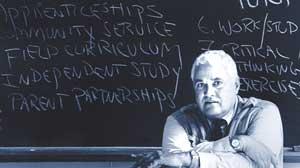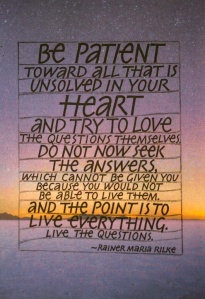This week our readings explored different types of data and school measurements for the purpose of school improvement. As we really begin to delve into our module 1, I want to highlight not the obvious importance of a question, but the consequence of what an intentional question drives. In other words, a good question can yield some interesting data and maybe even some conclusions. However, a great question will yield data leading to other questions! Which begins a cycle of research, thought, conclusions and a rich picture of information.
Victoria Bernhardt’s “Multiple Measures” article highlights the intersection of four key measurements. Her examples of questions which intersect the four key measurements drive her data collection. I completely agree with her approach and think we should consider purchasing some books as a resources for our class.
I have been working closely with a group at my school to develop a new mission and vision. We use guiding questions to lead us into conversation. We’ve been using a timeline framework to drive our questions.
What our school looks like in 2021? Questions for the Future (May 28, 2021)
What does outstanding, “signature” student success and engagement look and sound like?
What does outstanding, “signature” instruction and interaction look and sound like?
How are students being prepared for their life long journey?
In what ways do adults collaborate, think and learn together?
How do our programs and communities engage and intersect?
What dispositions (behaviors/values) stand out around the school?
Questions for how we got to the Future (from Sept. 2018- May 2021)
What specifically was developed or changed to achieve signature student success?
What specifically was developed or changed to achieve signature instruction and engagement?
What specifically was developed or changed to achieve our most effective collaboration?
How did it improve…What practices and areas of focus did we prioritize?
What does our school look like today (September 14, 2018).
What makes us good?
What initiatives, programs and designs drive our practice?
What are our students greatest strengths and attributes?
What are our most instructional practices?
How does our community thrive?
These questions lead us to more authentic/specific questions pertaining to our program. Which in turn lead to some really great conversations about our mission and vision work. I have shared a short comics called A day at the park It’s a cute comic discussing the value of questions vs answers. In a fluid field like education, where the only constant is change, it is my belief that we must always be questioning every aspect of our system, community and self to try to improve.


